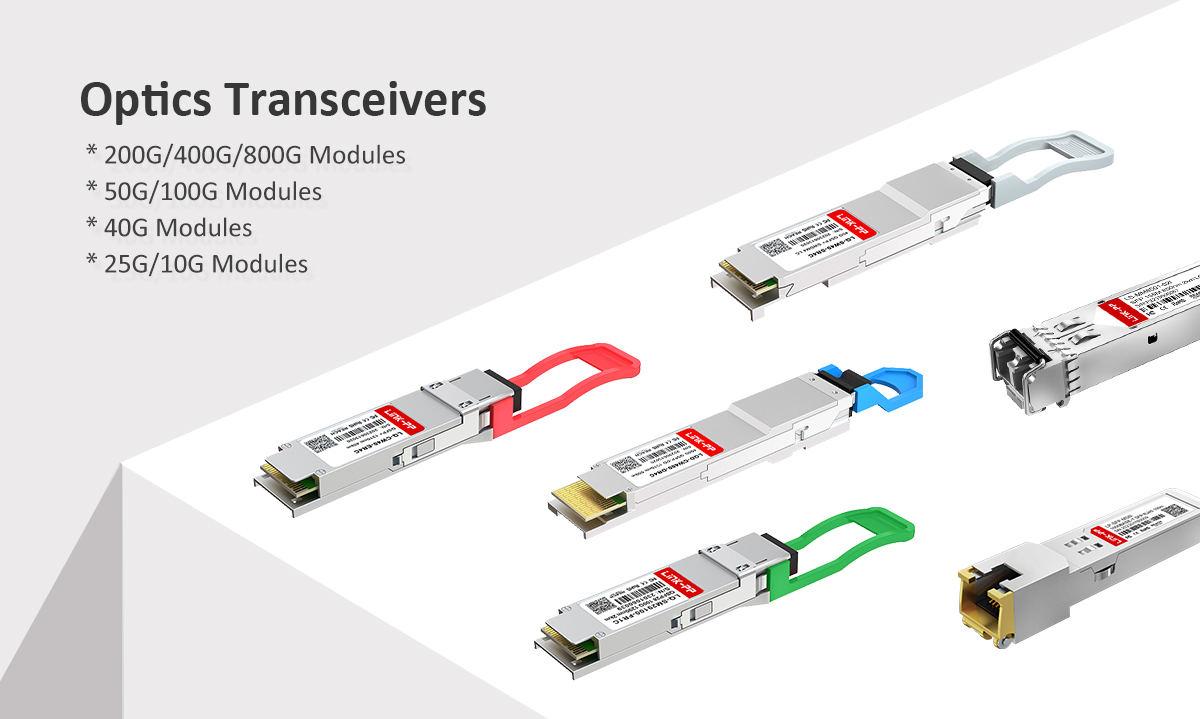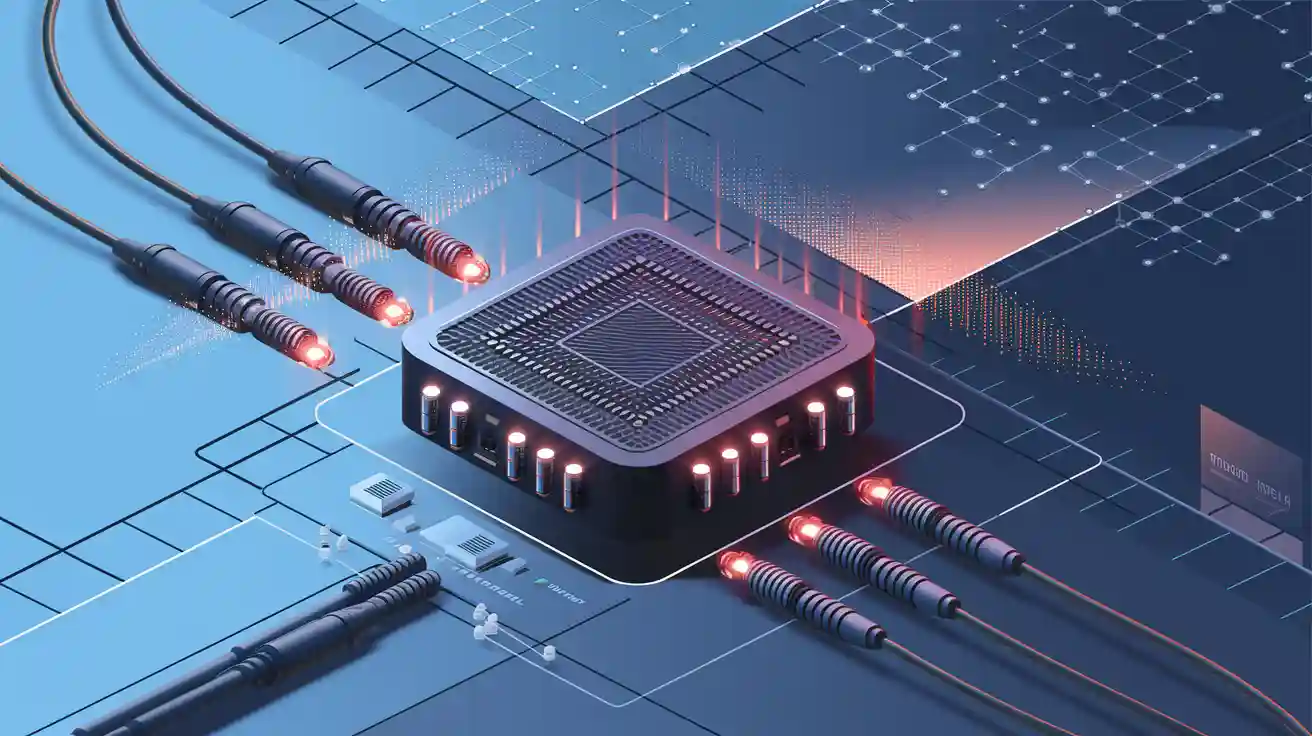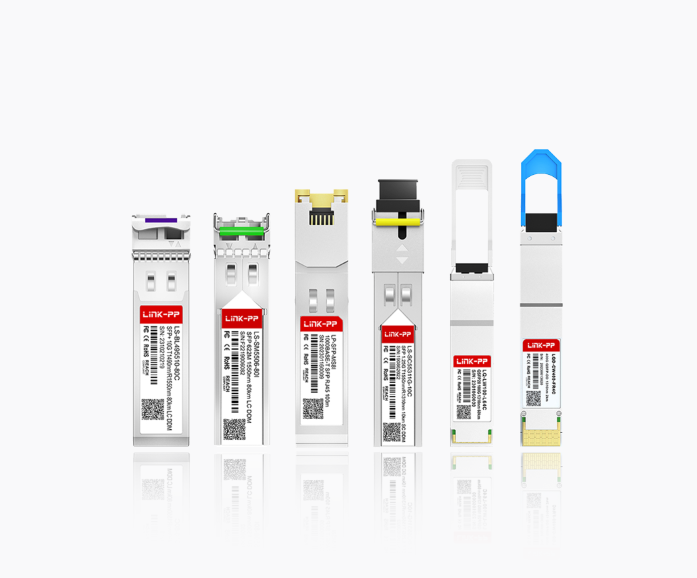
Introduction
Optical modules are critical components in fiber optic communications, enabling the conversion between electrical and optical signals. They are widely used in data centers, telecommunications networks, and industrial communication systems. Understanding their classifications and types is essential for selecting the appropriate module for specific networking requirements. This guide covers the most common classification methods and mainstream optical module types.
Classification by Form Factor (Package Type)
The form factor determines the physical size and interface of the transceiver, influencing compatibility with networking equipment.
Form Factor | Supported Rates | Key Characteristics |
|---|---|---|
SFP | 1G/2.5G | Compact, hot-pluggable for Gigabit networks |
SFP+ | 10G | Enhanced version of SFP with higher bandwidth |
SFP28 | 25G | Suitable for high-speed data centers. |
QSFP+ | 40G | Quad-channel design for high-density deployment |
QSFP28 | 100G | Industry standard for 100G Ethernet |
QSFP-DD | 200G/400G | Dual-density design for next-gen networks |
Classification by Data Rate
Data rate determines the transmission capacity of optical modules:
100 Mbps: Suitable for legacy systems.
1 Gbps (Gigabit): Common in standard enterprise networks.
10 Gbps: Widely used in data centers and high-performance networks.
25/40/100 Gbps: For high-throughput applications in modern data centers.
200/400 Gbps: Emerging standards for ultra-high-speed networking.
Classification by Fiber Mode
Determines the type of fiber optic cable used:
Fiber Type | Wavelength | Characteristics |
|---|---|---|
Single-Mode Fiber (SMF) | 1310nm/1550nm | Low loss, long-distance |
Multi-Mode Fiber (MMF) | 850nm | Cost-effective for short reaches |
Classification by Transmission Distance
Optical Modules are categorized by their reach capabilities:
Transmission Type | Typical Distance | Applications |
|---|---|---|
SR (Short Reach) | ≤2km | Intra-rack connections |
LR (Long Reach) | 10km | Metro networks, campuses |
ER/ZR (Extended Reach) | 40km-80km+ | Long-haul transport |
Note: CWDM/DWDM modules enable longer distances through wavelength division multiplexing.
Classification by WDM Type
Allows multiple signals to be transmitted simultaneously over a single fiber:
CWDM (Coarse Wavelength Division Multiplexing): Uses wider wavelength spacing; cost-effective for short to medium distances.
DWDM (Dense Wavelength Division Multiplexing): Uses narrow wavelength spacing; suitable for long-distance and high-capacity networks.
LINK-PP Optical Transceiver Solutions
LINK-PP offers a comprehensive range of optical transceivers to meet diverse networking needs:
1G SFP Modules: Ideal for standard enterprise applications.
10G SFP+ Modules: Suitable for high-performance data centers.
25G SFP28 Modules: Designed for next-generation data center networks.
40G QSFP+ Modules: Perfect for network aggregation layers.
100G QSFP28 Modules: For core network infrastructures requiring high bandwidth.
400G QSFP-DD Modules: Catering to ultra-high-speed networking demands.
Explore LINK-PP's full range of optical transceivers here.
Conclusion
Optical modules can be classified by data rate, form factor, transmission distance, and fiber type. Proper selection ensures network efficiency and cost optimization. LINK-PP's diverse portfolio of optical transceivers provides reliable solutions for various networking scenarios.




